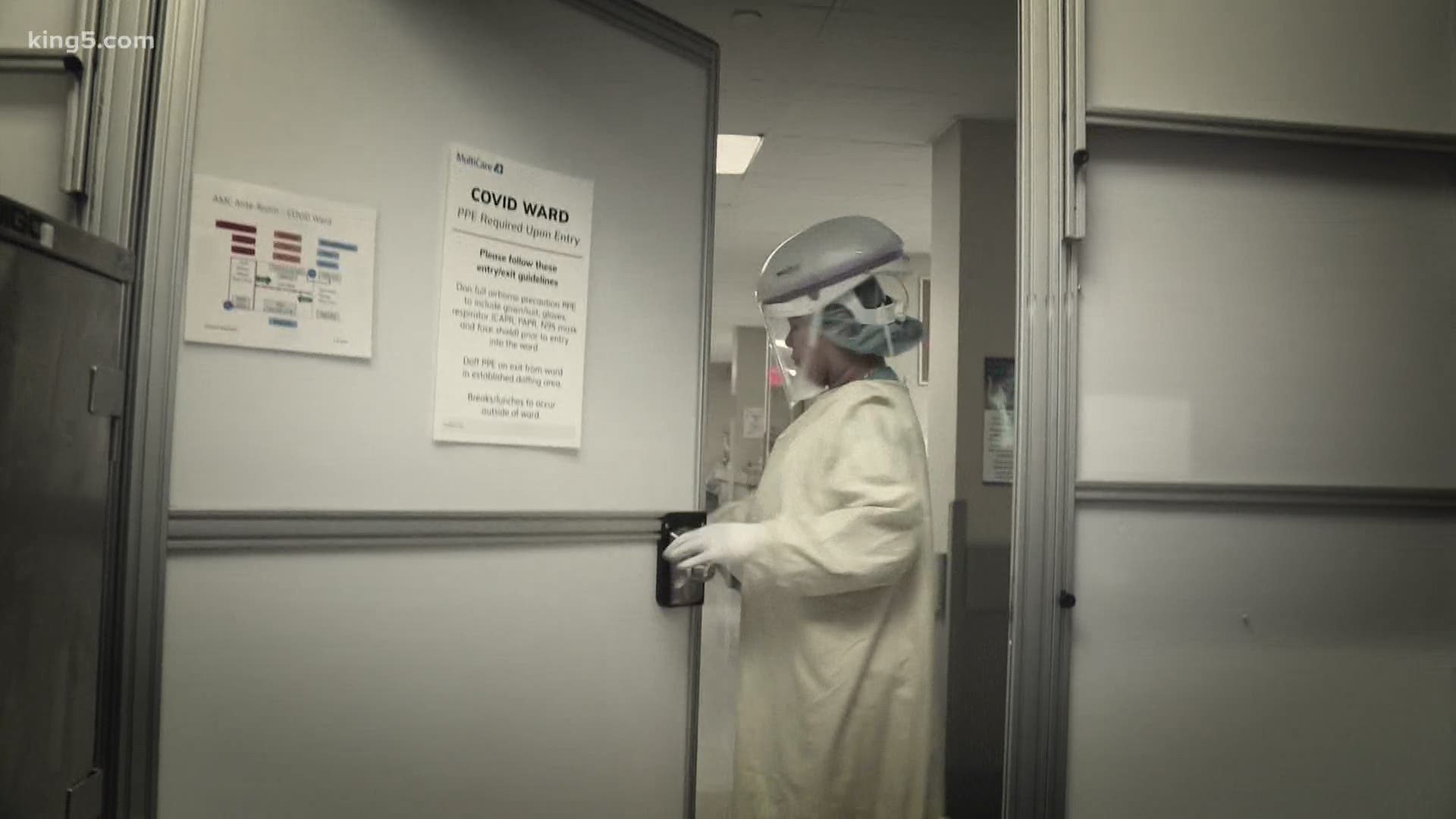When we think workers' compensation, we think of falling on the job, maybe breaking a bone. However, along with injuries, workers' compensation also covers illness.
Of the hundreds of workers' compensation claims related to COVID-19 in this state, roughly 83% are from frontline workers — those who work in patient care.
Numbers from the Washington State Department of Labor & Industries show that of the 806 COVID-19 related claims, 673 were from those on the frontlines: 636 from healthcare workers, 37 from first-responders.
Tim Church, a spokesperson from L&I, says that the people behind these numbers aren't necessarily all licensed workers such as doctors and nurses. The total includes workers who also clean patients' rooms.
Not all the claims were from workers who contracted the virus, Church said. Some are from people who were quarantined after workplace exposure.
"They may have been exposed at work, quarantined, but then never got sick," said Church.
"I'm not surprised that the majority of COVID-19 claims are coming from healthcare workers," said Marissa Baker, assistant professor of Environmental and Occupational Health Sciences at the University of Washington School of Public Health.
Baker is an expert at looking at this kind of data. She says while this is a start, these numbers aren't the whole picture.
"It's great to see this data, but it's important to note that not everyone is counted and the true burden is likely higher," Baker said.
Workers' compensation data is reliant on people submitting claims. But some workers who get sick or exposed never file claims, because of reasons such as not having access to a doctor, Baker said.
"There are a lot of workers, for a variety of reasons, don't feel like they know how to go through that system, they may not feel empowered to go through that system," Baker said.
To get a sense of the true burden COVID-19 has on the workforce, we'd have to look at the state's Department of Health data.
DOH spokesperson Will Finn said the Department is not yet giving that out, because their numbers aren't complete, therefore not reliable.
What the numbers from Labor & Industries can do, however, is give us an idea of who is impacted in the pandemic.
This data not only can inform state policy, but can help employers figure out how hospitals, nursing homes and ambulances can become safer work environments by seeing who is getting sick, and how.
"If it was a physician, someone working with the patient, it might be an increase in PPE (personal protective equipment). If it's a janitor, it might show that you need to turn down the rooms in a different way," Baker said.
If you are an essential worker, exposed to a lot of people and you are diagnosed with COVID-19, Baker encourages you to fill out an L&I claim.
You do so by visiting any doctor and, if its accepted, you can have your drugs, treatments and doctors visits financially covered.

